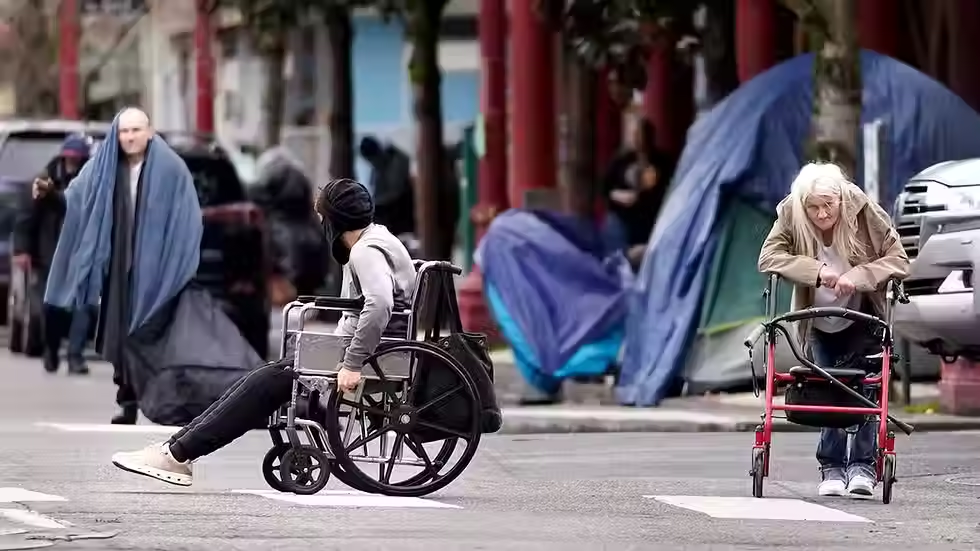The HCBS provision #BigDisCo isn’t talking about, or, did the federal government just create a funding stream for the newest stop on the preschool to prison pipeline while nobody was looking?
- Lois Curtis Center

- Jul 7
- 4 min read
Tucked away about 2/3 of the way through House Resolution 1 (HR 1), or the “One Big Beautiful Bill Act”, which was signed into law on July 4th, is a seven-page provision under Section 71121 titled “MAKING CERTAIN ADJUSTMENTS TO COVERAGE OF HOME OR COMMUNITY-BASED SERVICES UNDER MEDICAID”. HR 1 is the Congressional bill that makes previous tax cuts permanent, alongside proposals for reducing federal spending to capture savings for the overall federal budget.
Section 71121 would allow states to develop a Medicaid waiver program for people who do not “need” institutional services to receive support services in their own home or a “home like” location. The provision allots $50 million dollars for the new waiver in 2026, but doubles the appropriation to $100 million in 2027, an amount that, at first glance, may seem insignificant in the context of the overall HCBS budget but it is, in fact, nearly equivalent to the annual federal appropriation to centers for independent living.
This policy is a marked departure from how home and community based services (HCBS) have been historically administered. The “waiver” in these programs reflects that such programs waive program requirements such as care must be provided in a facility, with services available to Medicaid beneficiaries without limits on the number of participants, where they live, or what type of disability they experience. By opening the program up to Medicaid beneficiaries who are not at a level of care need to qualify for institutional services, what is Section 71121 intended to do?
We at the Lois Curtis Center aren’t “insiders” so we don’t know where this section came from, what the proponents of such a provision were trying to address, or who the proponents even are. #BigDisCo leadership has either been dismissive of the section, focusing on the traditional idea of HCBS as a “closed” system designed exclusively for disabled people to live in their own homes, or are outright ignoring it altogether. As a system that only serves 10% of the disabled population, and that disproportionately serves white disabled people and their loved ones, the focus on the provision as unworkable within the traditional HCBS system makes sense when it is examined with the lens that #BigDisCo examines bills.
But what if this new HCBS waiver is not intended at all to serve the folks #BigDisCo thinks about when they think about as needing in-home services and supports?
What if this new waiver is about funding, in part, “home” or “home-like” services to a group of Medicaid beneficiaries who reside in a cultural grey area when it comes to disability status: children with behavioral and/or mental health issues?
In the sound and fury of his talk about red dye in processed food, autism, and health tracking devices, HHS Secretary Robert F. Kennedy, Jr. has also proposed long-term “residential health camps” that would offer “homelike settings” for young people, Black children in particular, who would farm, “reconnect with communities”, and be “re-parented”:
"Every Black kid is now just standard put on Adderall, SSRIs, benzos, which are known to induce violence… And those kids are going to have a chance to go somewhere and get re-parented — to live in a community where there’ll be no cellphones, no screens…”
What RFK, Jr. has not yet publicly discussed is how his “major program” will be funded.
This is despite the recent announcement of significant proposed staffing and programmatic changes at HHS to save taxpayers $1.8 billion per year.
Little mention has been made of the fact that the federal government has tried the “wellness farm” approach in the past with narcotics abusers- it was an abysmal failure, replete with abuse of residents; 90% of program participants ultimately relapsed. Nor has #BigDisCo offered more than quiet pearl clutching at Kennedy’s fascination with the “healing farm” model at the San Patrignano healing center in Italy, which evolved from the U.S. practice of sending disabled and/or “delinquent” people to work on farms where they have been shackled, caged, and forced to engage in demanding manual and physical labor.
If the newest HCBS waiver is not intended to fund, in part, “wellness farms”, then what is the intent behind the waiver’s creation? And, again, how will “wellness farms” be funded? Speculation around possible new and existing federal funding streams for the initiative aside, one thing we do know is that “residents” of these “wellness farms” will, as a condition of their residency, engage in several years of unpaid labor, which will likely yield revenue as the result of the sale of what they produce.
Sounds like enslavement, or, at best, indentured servitude.
And anyone with a vested interest in disability rights, criminal justice, labor exploitation, systemic racism, the preschool to prison pipeline, and/or “at-risk” youth should, at least, have a passing curiosity about “wellness farms”, about which RFK Jr proudly stated:
The prospect of developing a community-based wellness farm system as a Home and Community Based "alternative" should be incredibly alarming to advocates who for years have pushed for de-institutionalization and control over decision-making for disabled people.
Unless, of course, #FreeOurPeople doesn’t apply to these people.



Comments